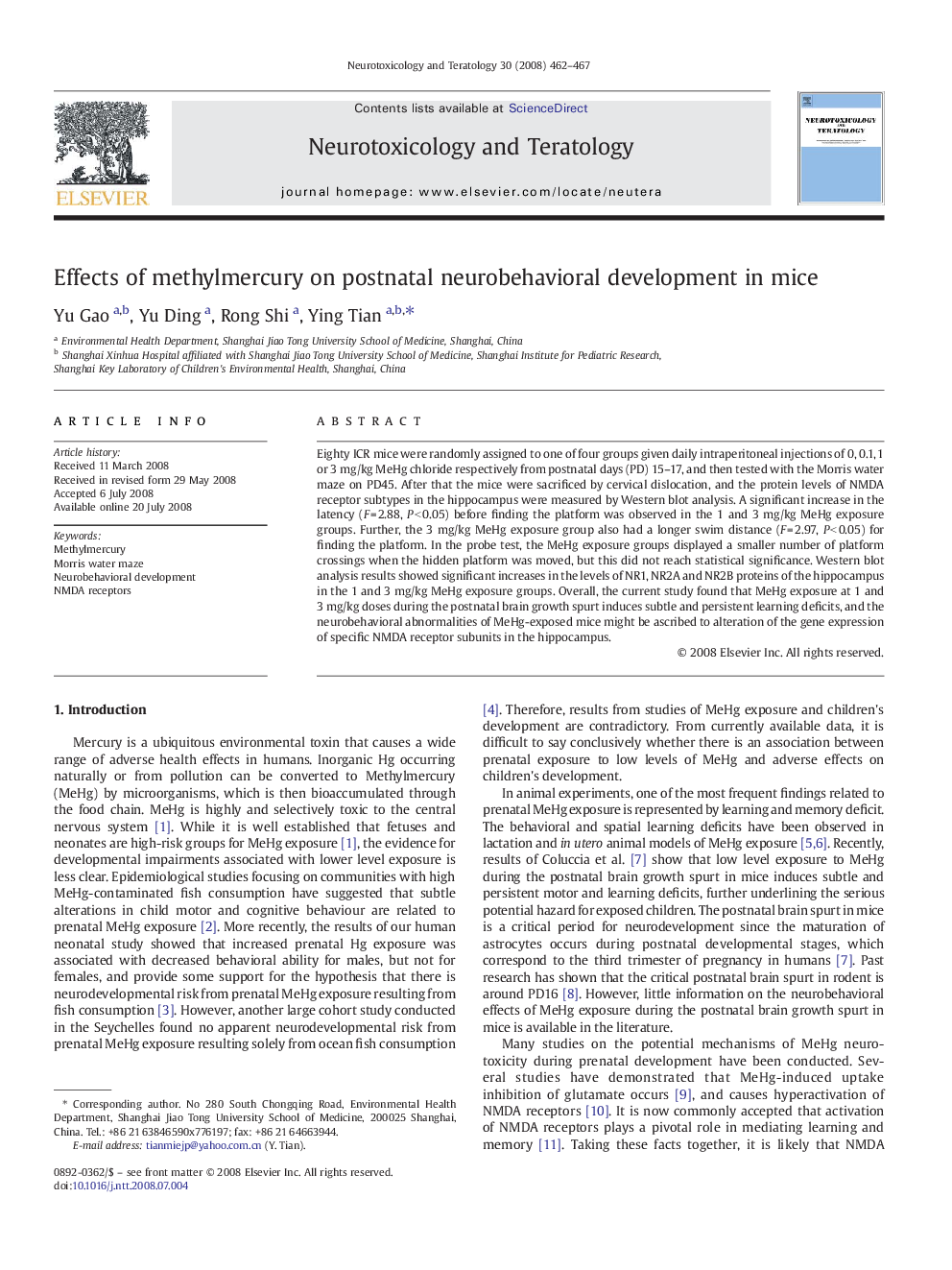| Article ID | Journal | Published Year | Pages | File Type |
|---|---|---|---|---|
| 2591751 | Neurotoxicology and Teratology | 2008 | 6 Pages |
Eighty ICR mice were randomly assigned to one of four groups given daily intraperitoneal injections of 0, 0.1, 1 or 3 mg/kg MeHg chloride respectively from postnatal days (PD) 15–17, and then tested with the Morris water maze on PD45. After that the mice were sacrificed by cervical dislocation, and the protein levels of NMDA receptor subtypes in the hippocampus were measured by Western blot analysis. A significant increase in the latency (F = 2.88, P < 0.05) before finding the platform was observed in the 1 and 3 mg/kg MeHg exposure groups. Further, the 3 mg/kg MeHg exposure group also had a longer swim distance (F = 2.97, P < 0.05) for finding the platform. In the probe test, the MeHg exposure groups displayed a smaller number of platform crossings when the hidden platform was moved, but this did not reach statistical significance. Western blot analysis results showed significant increases in the levels of NR1, NR2A and NR2B proteins of the hippocampus in the 1 and 3 mg/kg MeHg exposure groups. Overall, the current study found that MeHg exposure at 1 and 3 mg/kg doses during the postnatal brain growth spurt induces subtle and persistent learning deficits, and the neurobehavioral abnormalities of MeHg-exposed mice might be ascribed to alteration of the gene expression of specific NMDA receptor subunits in the hippocampus.
